Nowhere to go: Girls can still dream in wake of CWHL's collapse, just not too big
In a nondescript strip mall in Oakville, Ont., behind an opaque black door with a peeling sign, is a cavernous gym full of daunting pieces of fitness apparatus and large ropes that hang from the ceiling. You can barely talk over the music that pumps continuously.
In the gym's back corner, a group of young girls, mostly 11 and 12 year olds, drip with sweat and cringe as they try to keep pace with a gruelling workout. The Oakville Hornets have come to work and get stronger; part of the team's weekly dryland training.
Girls on this competitive team are at the beginning of their hockey journey. Most of them have been playing rep or competitive hockey for only a few years and are just beginning to discover the joys of the game.
"On the ice, you just let go of everything else around," says Julia Foster, who has been playing hockey since she was five. "You are focusing on how to get better. It gives you courage to prove to people you can do whatever you put your mind to."

Foster and her young teammates are full of dreams as they embrace the game they are told is part of Canada's national fabric. Last season, on a number of occasions, Foster's team had an opportunity to see women's hockey at its highest level when they attended Toronto Furies games, a team in the now-defunct Canadian Women's Hockey League (CWHL).
"To see them play was heartwarming because you got see people who used to be your age actually playing at that level," Foster says. "To have somebody to actually look up, to know there could be a future, to actually see it's possible."
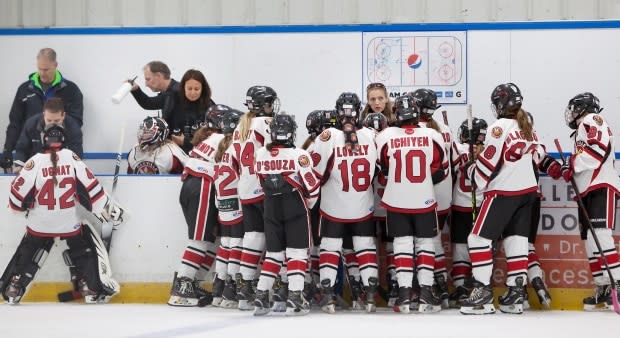
For now, Foster and young female hockey players across the country can still dream. Just not too big. There will be no more trips to Furies games.
As the Oakville Hornets rise in the hockey world, the women's professional game is in the midst of another unsure fall. In May, the CWHL abruptly folded, derailed by the same factors that have plagued the growth of women's hockey for years: tepid fan interest and poor ticket sales; lack of real sponsorship investment; and no consistent television coverage. In a final communique, the league's board of directors was blunt: "The League is not generating enough revenue to cover expenses."
The CWHL was around for 12 seasons and had six teams when it ceased operations, including four in Canada. Over the years it had teams in a number of markets and tried various configurations and business arrangements, including two teams in China. Despite its off-ice issues, the league was home to a majority of the game's top players and was a key training ground in the four years between Winter Olympics. In its wake, only one professional league remains. The National Women's Hockey League (NWHL), which was established in 2015, is a smaller league with five U.S-based teams.
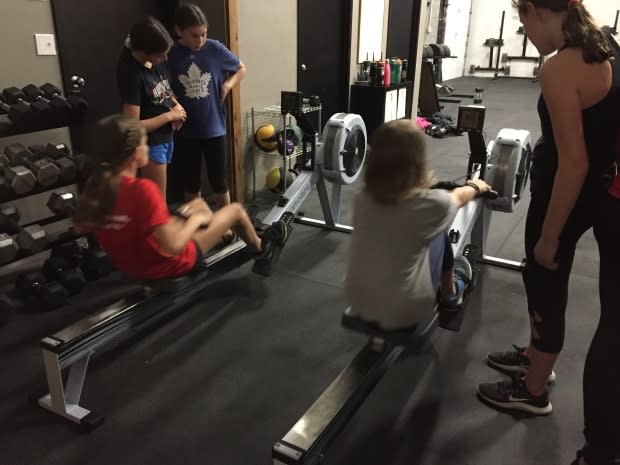
The CWHL's abrupt demise has again thrown women's hockey into a state of flux. Players and experts close to the game say the implications of having no professional women's hockey league in Canada will be felt from the grassroots all the way up to the Olympic team. It has also ignited a conversation about whom, if anyone, has a role in ensuring that thousands of young female hockey players have something to aspire to.
The issue for women's hockey in Canada hasn't been growth. Girls' registration continues to tick upward, while boys' hockey participation has flat-lined. The problem has been at the professional level, where fevered interest, from both fans and sponsors, froths up every four years at Olympic time, but wanes almost immediately after. Maintaining interest in the intervening years has proved difficult.
"It's frustrating to see companies jump on athletes and do commercials about female hockey during the Olympics and then it's gone," says Carlee Campbell, a former all-star defenceman with the Toronto Furies. "When is somebody going to step in and when are little girls going to be able to look up and see these larger companies and know that they actually support women's hockey beyond the Olympics?"
Campbell couldn't wait any longer for that question to be answered. After the CWHL folded, Campbell and others simply decided to walk away from the game. Campbell says she doesn't see a "foreseeable future" in professional hockey and, at age 31, couldn't afford to sit around and wait to see what happens next.
"I didn't want to end my career. I wanted to play again."
I loved going to those games. I met the players. I could look them in the eye and say this is where I want to be. - Oakville Hornets forward Shannon Henshaw
She has stayed close to the game. Inside the Oakville gym, she's the one leading the young Hornets through their workout. Campbell marvels at the girl's effort, passion and desire to get better. The team is equally impressed by Campbell, who they had the opportunity to cheer.
"When we went to games they saw how the girls had to prepare, what it took to compete," says Hornet's coach Michelle Henshaw. "You are an athlete; it is part of your life. The competition, the level of skill they can aspire to. You can see it right there."
"I loved going to those games," says Hornet's forward Shannon Henshaw. "I went in to the dressing room, I met the players. I could look them in the eye and say this is where I want to be. If they can make it, I can make it." .
Kiska Colwill, who has a daughter on the team, nods her head beside her. "That there isn't a women's league with so many girls playing the sport is unfathomable. What happens to my daughter when she finishes minor bantam? I don't know what that road is. For boys, it is the No. 1 topic."
Campbell is also helping Christina McCulloch get better. The 17-year-old works hard at her game and is often on the ice five times a week. She will continue her hockey journey next fall at Wilfred Laurier University in Waterloo, Ont., but beyond that her next steps are uncertain. McCulloch points out that there are countless professional leagues where males can continue to play, develop and get paid a decent wage.
"They have many more opportunities; it's hard to think about," she says. "I would love that opportunity — absolutely love it."
While players like Campbell made the tough decision to hang up their skates, a majority of the game's best players have forged on, trying to give players like Korliss and McCulloch and thousands of others something to aspire to.
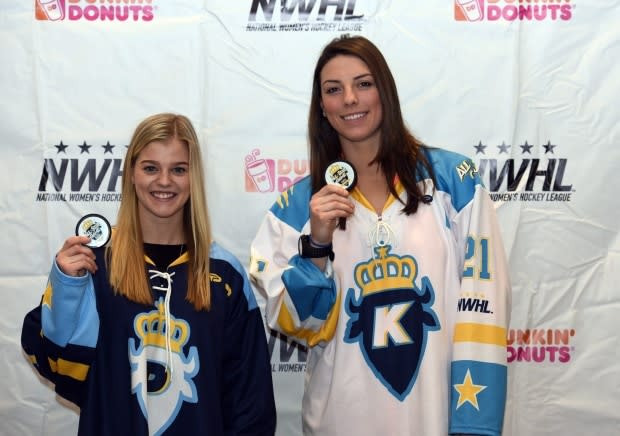
In May, 200 of North America's top female players formed the Professional Women's Hockey Players Association (PWHPA). The players vowed to sit out this season in order to push for one financially viable and sustainable professional league. In a nutshell, they want a living wage and better working conditions.
It's an international movement. In September, the Swedish Ice Hockey Federation cancelled the Four Nations Cup, an annual tournament which was scheduled to also include Canada, Finland and the United States. Sweden couldn't guarantee its players would participate because of an ongoing pay dispute. The Swedish players, unhappy with pay, travel conditions and scheduling, also formed a union.
In 2017, members of the U.S. women's national team were successful in winning better compensation after threatening to boycott the world championships.
To promote their cause, and to remain on the hockey radar, the PWPHA launched the recently wrapped up Dream Gap tour, which saw a series of games played in Toronto, Chicago and New Hampshire. The tour aimed at establishing deeper ties with fans and sponsors. In a release the PWPHA spelled out what the tour was attempting to highlight.
"A young boy can lace up his skates and imagine himself circling the ice in his favourite professional team's jersey as the crowd chants his name. He dreams it, because he's seen it countless times. There is no realistic equivalent for aspiring female hockey players to imagine their futures."
Liz Knox, a PWPHA board member and former CWHL goalie, says barnstorming across North America is not something the players want to be doing.
"There was a sense of sadness that this is what it's comes to," Knox says. "It's taken the best 145 players in the world to say we're not going to play hockey this year. We are trying to get the attention of Hockey Canada, USA Hockey, the NHL, sponsors."
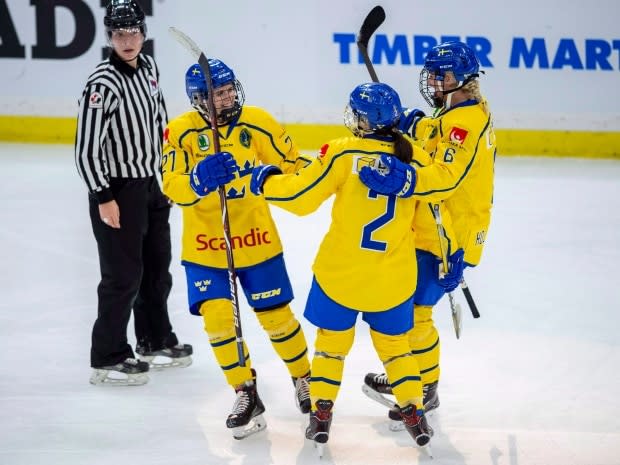
Knox hopes the tour dispels the rhetoric about equality and opportunity when it comes to girls' hockey in Canada. She says without a professional league, the only thing girls can honestly dream of is a spot on the Olympic team.
"If I'm not the 30 best in Canada, is there somewhere where I can continue to develop? And that's the thing for young girls. If you are not in that top 30 you're done, you're not going to keep playing hockey," Knox says.
"You are not going to spend evenings and weekends going to rink. For what? There is no dream. There is nothing to aspire to. So how do you keep a 14-year-old or a nine-year-old or a six-year-old motivated if year by year by year the dream dwindles. Girls should be able to leave the game on their own terms, not when they're 14."
The Dream Gap tour was a modest success. Some of the games were streamed online but none were broadcast on television. It played to full houses in small arenas and managed to attract support from a number of large sponsors including Adidas, Bauer and Budweiser.
It's expected more Dream Gap dates will soon be announced. Recently Budweiser, in conjunction with PWHPA, launched an ad that begins with celebrities like Don Cherry and Gerry Dee enthusiastically singing lines from Stompin' Tom Connors's famous "Hockey Song."
In the ad's second half, a group of female hockey players soberly speak the song's lyrics as the arena lights go out. The message is clear: the good old hockey game is only great when it's for everyone. It's unclear the size of Budweiser's financial commitment but in a release it said it is "encouraging other brands to lay it on the line, step up and show their support for the women's game
We're talking multi-million [dollar investment]. We're not talking about some free apparel and some free running shoes here and there." - Laura Walzak, former CWHL board member
Knox says to many watching, the tour was achieving many of its goals.
"The players carry themselves professionally, act professionally, they certainly perform professionally on the ice. But behind the scenes there are gaps," Knox says. "To the outsider it may appear professional. For example, during the Dream Gap tour somebody said, 'Oh these girls are on tour, they must make a ton of money.' The idea is that we appear professional. We want to appear that way but we are really not."
Many of the challenges facing the PWHPA mirror those that doomed the CWHL. If a league emerges where players can make an actual living, many things will have to shift. When the CWHL folded, it had expenses of $4.2 million and revenues of about $3.2 million. The league was paying its players a stipend of $2,000-$10,000 dollars per year. The CWHL board of directors said that it would take $5 million-$6 million to run the league "adequately" or $10 million to run it "professionally."
In order to drive that kind of revenue any emerging league will require robust sponsorship and broadcasting, creating a kind of Catch-22 for the CWHL.
"The League desired more fans watching games, both on television and in the stands, yet to attract more fans the League needed more broadcast airtime and more advertising and sponsorship dollars to drive marketing," said the league's final statement.
The handful of CWHL games that were televised drew modest interest but "not enough to suffice increased airtime and advertising dollars."
Former CWHL board chair Laurel Walzak, now a communications professor at Ryerson University, says the league couldn't convince sponsors to stick with it as it attempted to build an audience by televising games more consistently.
"When fans don't watch the broadcast, broadcasters have difficulty selling advertising. So we needed commitment from sponsors that they were going to commit to the advertising, they're going to commit to more airtime for us."
Walzak says the "massive" moves many sponsors talked about making around women's hockey never materialized into actual financial investment.
"We're talking multi-million [dollar investment]. We're not talking about some free apparel and some free running shoes here and there."
What has changed?
So what has changed?
Julie Young, a professor in Brock University's sport management program, says members of the PWPHA can overcome these historical challenges by shifting the conversation from a social case to a business case.
"Up to now the discussion about opportunity and equity and gender balance in the game played to the social cause of supporting a woman's professional league." Young says. "But when you talk of a professional league you're talking about a business venture. So you now have to message to the right kinds of investor capitalists who might support the league, sponsors that might support the league in more of a business case."
Young cautions that players can't use the metrics that accompany Olympic hockey when trying to make the case for a league.
"It's basically a startup. It's an emerging venture that you need to look at what the market research is telling you," Young says. "You can't really assume that all the emphasis that backs it up as a high-performance sport program will shift over and automatically those resources will help get it off the ground."
It's been an issue early on for the PWPHA. Former player Chelsea Purcell, who is now doing sponsorship consulting for the player's association, says advertisers are looking for metrics to support a return on investment that the burgeoning association can't provide at this early stage.
I just believe that a pro women's league should be able to prove that it's viable without the NHL, without NHL teams. And that's what we're proving. - Dani Rylan, NWHL commissioner
"That's what a lot of these sponsors want, versus how are people going to view our brand," Purcell says. "How are they going to see the strength of our brand? Are they going to actually purchase products because they want to support those that are supporting women's hockey." Young says the lack of meaningful investment thus far means either women's hockey isn't viable or a clear business case hasn't emerged.
"This is reversed. It's not a bunch of investors seeing a market opportunity and stepping forward and then as time goes on the players in this league unionize and organized," Young says. "It's the opposite. You've got players who are unionizing and organizing now, needing to attract investors to set the league up for them to play in."
Given all of the challenges, many have long pointed to the NHL as the saviour for women's hockey. The thinking is that the established league, with its arenas, sponsorship, marketing and broadcast reach, would easily lift the women's game to the heights many have for so long thought possible.
Many within the PWPHA believe some kind of partnership with NHL is the only real way forward.
"It would be awesome if we could be under the NHL umbrella because that structure is already there, the moving parts are already there to be able to get us in the right direction," says goalie Shannon Szabados, who twice won Olympic gold with Canada's women's team and who is also a PWPHA board member. "We aren't looking for a single investor because then you are starting from scratch."
For months though, the NHL's talking point has been the same: It is only interested if there is only one league. And while the CWHL folded, the five-team NWHL continues to operate in the United States.
Earlier this year, NHL deputy commissioner Bill Daly said the league backs "the concept of professional women's hockey and elite women's hockey players having the ability to play the game at a professional level," but it is too early to commit to a bigger role.
"We certainly want to preserve the ability of women players to play at the highest level," Daly said. "So it's really too early to say how that is going to play out and how the NHL's role will or won't be going forward. We're going to have to be observers."
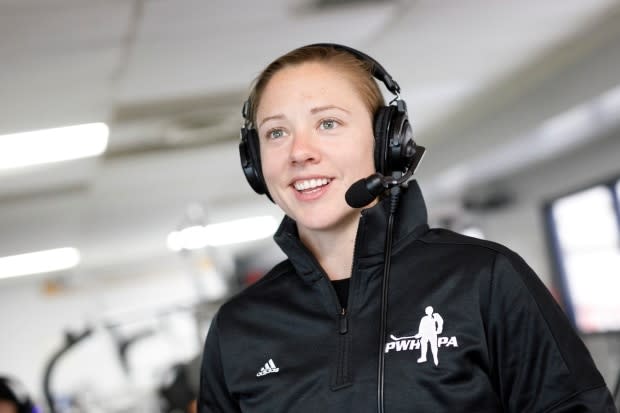
If NWHL commissioner Dani Rylan is any indication, that doesn't appear imminent. The NWHL may lack the game's biggest names but Rylan told the Associated Press earlier this month: "We're not going anywhere. We're just growing."
"I think the message right now is the NHL needs to save professional women's hockey," she added. "And I just believe that a pro women's league should be able to prove that it's viable without the NHL, without NHL teams. And that's what we're proving."
The NWHL may even be growing. Reports earlier this month indicated the league has added new investors and is targeting an expansion team in the Greater Toronto area by as early as next season.
"What's happening right now can't go on forever," says Purcell. "The NWHL doesn't look like it's going to fold and that's the worrisome part. If the NHL never steps up then we need to find a different route and what that is and who is leading that I don't even know"
So what then? The Dream Gap tour is over. The world championships are in Halifax next April and it appears almost certain there will be no women's professional league in Canada this season.
One group being looked at to play a more active role is Hockey Canada. The CWHL used to be the training ground for the 25 players who would eventually represent Canada on the international stage. It also provided a home to about 100 other players where they could continue to hone their skills and try to push into the top group.
Knox says the CWHL's demise means others like Hockey Canada now have to step in and provide more financial support and leadership.
Not in business of running leagues
"Hockey Canada could fill a role similar to the NHL and really work to start a league. It's a shame that it's taken this long to see a substantial investment from them," Knox says. "Maybe this will be an eyeopener for them that if you want to keep producing gold medals, because that's their big concern for women's hockey, an investment needs to be made in the years in between."
Gina Kingsbury is a two-time Olympic gold medallist and is now the director of the women's team for Hockey Canada. She says with no league in place this season, her priority is looking after the pool of athletes competing for a roster spot ahead of the 2020 world championships. Kingsbury says it's not part of Hockey Canada's mandate or strategic plan to fund or operate a league.
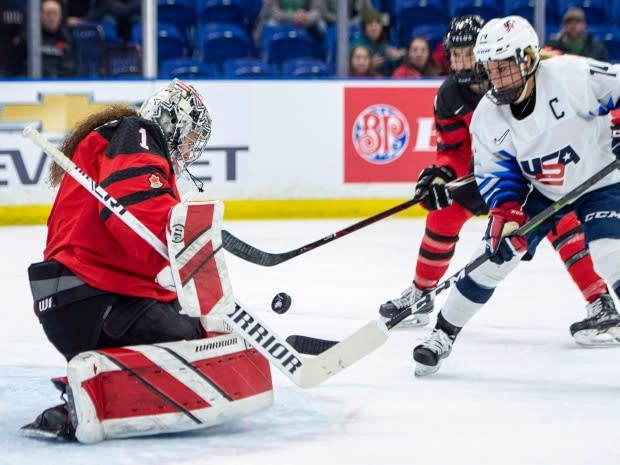
"We've discussed that internally to be quite frank, [and] the answer that came out is that we're not in the business of running leagues," Kingsbury says. "Our mandate is to grow the game from a grass-roots perspective and to be able to produce world-class teams that compete internationally.
"We certainly support our athletes and in their quest of knocking on the door to the NHL or whoever may want to start a league and will take this project on."
At the same time, Kingsbury says, with no league in place, concerns grow about Canada's readiness as it prepares for the Beijing Olympics in 2022. She concedes Hockey Canada could set something up temporarily but nothing that would be sustainable in the long term.
"Maybe the pool of athletes just grows next year and we create a certain amount of games among 90 athletes. I have no idea what the answer is. But those are questions that obviously we're constantly asking ourselves and we haven't come up with the answer."
Who will usher women's hockey forward?
So who, if anyone, will usher women's professional hockey in Canada forward?
The NHL continues to vacillate. Hockey Canada and others don't envision running a league on their own. An unknown benefactor or a coalition of sponsors willing to take a risk has yet to emerge.
For now, the future is again unknown. Even the game's biggest stars like Marie-Philip Poulin are cautious.
"Right now we are starting at the bottom; nothing great is built in a year. We don't want what the NHL has. Nobody is saying that," Poulin says. "But look at men's minor league hockey. They play full time and make a living doing what they love to do. That is what we are trying to do right now. There is light, [but] it might be further away than we think."
Poulin's message to the thousands of young girls across Canada is simple.
"I still say dream big. Yes to the Olympics but dream of a league. We want to create that. So I still say dream big because I believe it will happen."
Girls like Julia Foster and her Hornets teammates in Oakville are watching closely, hoping their story will be different.
"It's sad. It seems like nobody seems to care about it right now."


